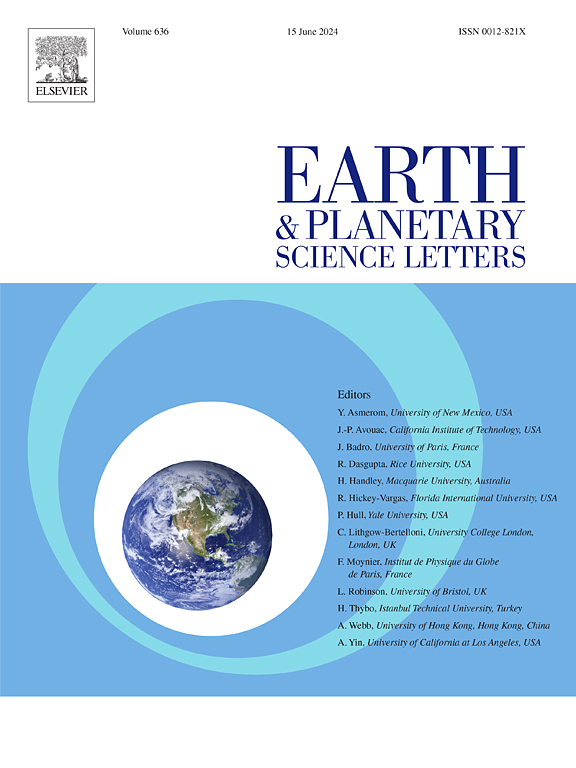Crustal thickness effects on chemical differentiation and hydrology on Mars
IF 4.8
1区 地球科学
Q1 GEOCHEMISTRY & GEOPHYSICS
引用次数: 0
Abstract
The thermal state of planetary crusts depends primarily on heat flow from the mantle to the crust and the depth-integrated radioactive heat generation in the crust. The latter scales with crustal thickness, such that for a given concentration of heat-producing elements, the thicker the crust, the hotter it will be. If estimates of Martian crustal thickness are correct and if these thicknesses are representative of the Noachian crust, thermal modeling shows that the thick crust underlying the southern highlands should have been hot enough 4–3 billion years ago to produce widespread partial melting in the lower crust, whereas the thinner crust beneath the northern lowlands would not have been hot enough to melt. Widespread melting of the lower crust in the southern highlands should have generated significant amounts of silicic magmas, such as granites, as direct partial melts or by fractional crystallization of such melts. Silicic plutons are thus predicted to lie at depth beneath the southern highlands, now hidden beneath a carapace of younger basaltic flows. High surface heat flux imparted by the thick southern highlands crust would also have reduced the extent of permafrost, generating an underlying, stable aquifer of liquid water in the Martian regolith during the Noachian. Tapping of this aquifer by volcanoes or impacts may have caused episodic flooding on an otherwise frozen planet.
求助全文
约1分钟内获得全文
求助全文
来源期刊

Earth and Planetary Science Letters
地学-地球化学与地球物理
CiteScore
10.30
自引率
5.70%
发文量
475
审稿时长
2.8 months
期刊介绍:
Earth and Planetary Science Letters (EPSL) is a leading journal for researchers across the entire Earth and planetary sciences community. It publishes concise, exciting, high-impact articles ("Letters") of broad interest. Its focus is on physical and chemical processes, the evolution and general properties of the Earth and planets - from their deep interiors to their atmospheres. EPSL also includes a Frontiers section, featuring invited high-profile synthesis articles by leading experts on timely topics to bring cutting-edge research to the wider community.
 求助内容:
求助内容: 应助结果提醒方式:
应助结果提醒方式:


